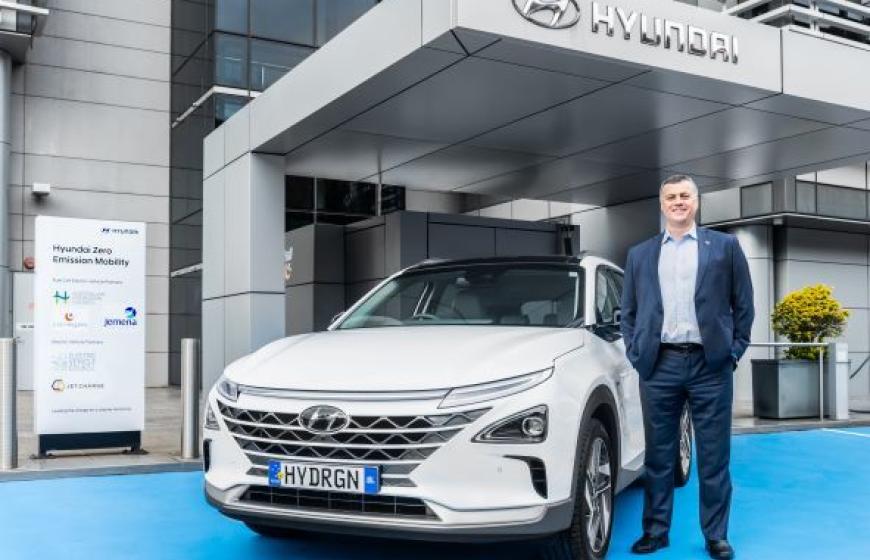Hydrogen supply lines to Australia’s zero-emission vehicle industry have been strengthened, with a new deal signed by Coregas, Hyundai and Jemena.
Coregas, Hyundai and Jemena recently signed a Memorandum of Understanding (MoU) that will see the production and delivery of hydrogen gas to Hyundai’s Macquarie Park headquarters from early 2021 for use in their hydrogen-powered vehicle refuelling station.
The MoU follows formal certification from the Australian Government for Hyundai’s hydrogen-powered Fuel Cell Electric Vehicle (FCEV), the NEXO. While the NEXO has received all official clearances required for use on Australian roads, it is currently only available to governments or fleets with access to a hydrogen refilling station.
Coregas Executive General Manager, Alan Watkins, described the partnership with Hyundai and Jemena as a significant step forward for Australia’s hydrogen vehicle industry.
“Australia’s lack of hydrogen refilling stations and associated infrastructure is consistently cited as a barrier to the growth of a strong domestic zero-emission vehicle industry. Australia currently has just the one hydrogen refuelling station,” said Watkins.
“Our partnership with Hyundai and Jemena is the first step towards demonstrating that Australia has the opportunity to be a world leader in the hydrogen-powered vehicle industry.”
“This is the first of many small steps needed to accelerate the use of hydrogen and fuel cell technologies for transportation in Australia. Coregas looks forward to contributing to the future of clean energy and green transportation in Australia,” said Watkins.
Under the MoU, Jemena is set to develop a power-to-gas project in Western Sydney, which will produce green hydrogen. Coregas will provide hydrogen compression installation, pipework and connectors for filling and discharging, as well as hydrogen packaging, transportation, and quality control services.
This is not the first time that Coregas has partnered with Hyundai. Coregas helped bring Hyundai’s hydrogen-powered concept car to life in 2015— Hyundai’s ix35 Fuel Cell was powered by Coregas hydrogen.
FCEVs combine hydrogen and oxygen to produce electricity, which runs the motor. With an official range of over 650 kilometres, hydrogen-powered FCEVs like Hyundai’s NEXO can travel much further than pure electric vehicles and can be refuelled in under five minutes, in much the same way as a petrol car. The only emission from a hydrogen-powered FCEV is water vapour from its tailpipe.
In Australia, there is one permanent hydrogen refuelling station, at Hyundai’s Macquarie Park headquarters in Sydney. A refuelling station is under construction in the ACT, with others planned for Melbourne and Brisbane. The largest hydrogen vehicle fleet in Australia is the 20 Hyundai NEXO SUVs, soon to be deployed by the ACT Government.
The global hydrogen-powered vehicle industry was valued at around $650 million in 2018 and is projected to be about 60 times higher by 2026.
